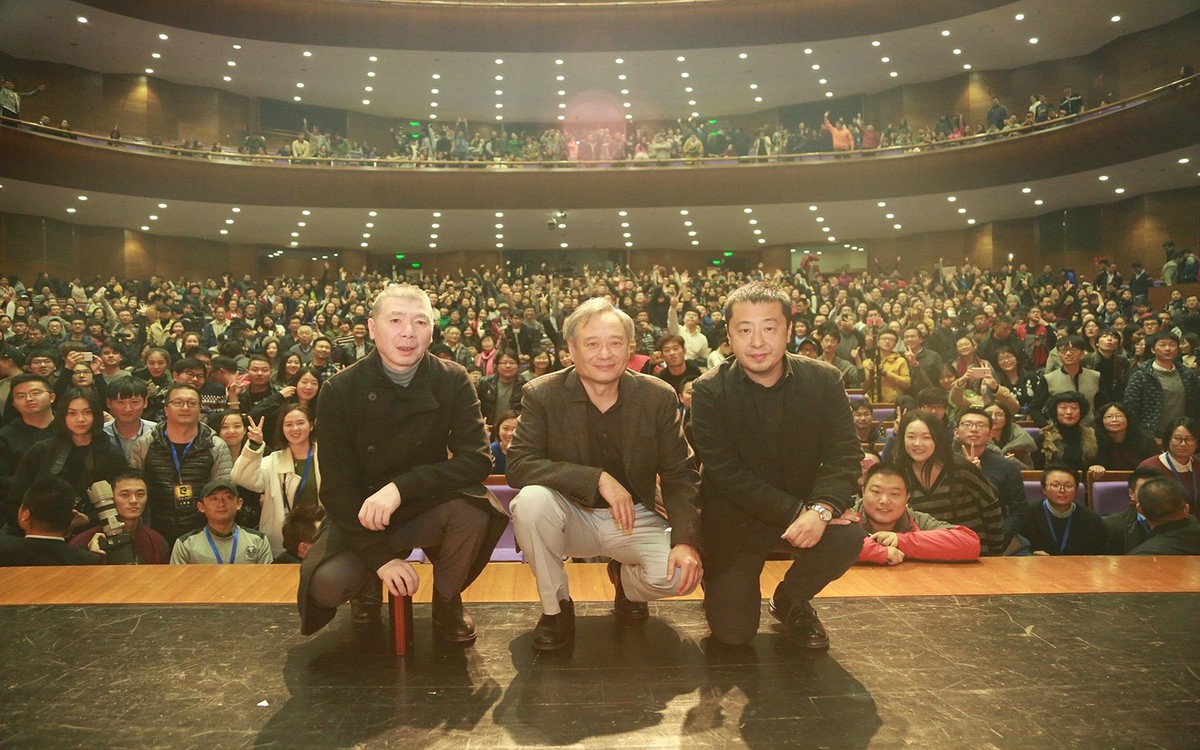A popular director takes on a superhero with an innovative film but uncomfortable and unfamiliar storyline for Chinese audiences.

China’s leading film directors, from left, Feng Xiaogang, Ang Lee and Jia Zhangke spoke about their craft at Tsinghua University on November 7
Two new wide releases — Ang Lee’s Billy Lynn’s Long Halftime Walk and Japanese anime One Piece Film: Gold — this weekend attempt to challenge Disney/Marvel’s Doctor Strange, which has racked up RMB 415 million (US$61.0 million) through Thursday, November 10.
The new openings will steal a good proportion of movie screens from Cumberbatch’s Strange, although CFI is still predicting a weekend victory in the range of RMB 125-135 million ($18.5-$20.0 million) owing to its positive word of mouth.
Given the competition, the expected 55-60 percent drop in second-weekend business is greater than last year’s Ant-Man (-49 percent), but will still be the best hold among superhero films in 2016.
Below, CFI takes a look at how Billy Lynn stacks up.
Billy Lynn’s Long Halftime Walk (比利·林恩的中场战事)
China Distribution – China Film Group Corporation (中国电影集团公司)
US Distribution – Tristar Pictures (Sony)
Taiwan-born director Ang Lee is considered somewhat of a national treasure to many Chinese. An ambassador who brought recognition of Chinese cinema to global audiences with the unparalleled critical and commercial success of Crouching Tiger, Hidden Dragon (2000), and a pioneer who continually experiments with cutting edge film technology like he did with Life of Pi’s (2012) stunning visual effects, Lee is once again pushing into unchartered territory, filming Billy Lynn in hyper-real 120 fps, 3D and 4K resolution.
The effect is jarring, as I and other moviegoers witnessed at a screening at this year’s New York Film Festival, giving the film an ultra-HD documentary style and putting every flaw — an actor’s stilted lines, poorly mixed off-screen dialogue — under a microscope.
Lee’s intentions have been praised, but critics bludgeoned the results, and sure enough that poor word-of-mouth made its way to Chinese shores. Still, curiosity abounds among Lee’s staunchest Chinese fans — and there are many — especially in the original version, which will be projected in just nine theaters nationwide. Tickets – some going for as high as RMB 320 ($47) – were snapped up within minutes of going on sale.
However, the biggest hindrance to a box office performance replicating Life of Pi‘s — the fifth-highest grossing film of 2012 with RMB 573 million ($91 million) — is Billy Lynn’s subject matter.
While Life of Pi explored universal themes of survival and storytelling leading to $609 million at the worldwide box office, Billy Lynn’s story lacks that same global appeal, focusing instead on an American soldier suffering from Post-Traumatic Stress Disorder (PTSD) after returning home from a controversial American conflict, all against the backdrop of an American football game.
Despite Lee’s powerful draw and the technical achievements sure to pull in film fans, Billy Lynn’s Long Halftime Walk will fail to attract general audiences unable to relate to its story. CFI predicts a weekend total of RMB 100 million ($15 million) and a final run of RMB 180 million ($27 million).





